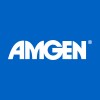
Ruxolitinib in Seborrheic Dermatitis
Seborrheic DermatitisThis study is an open-label prospective interventional trial that will assess the efficacy of ruxolitinib in the treatment of seborrheic dermatitis. It will also attempt to characterize the molecular immune profiles of patients with SD at week 0 and week 4, with comparison to baseline profiles in healthy control subjects.

A Study Assessing Rocatinlimab in Combination With Topical Corticosteroid and/or Topical Calcineurin...
Atopic DermatitisThe coprimary objectives of the study are to: evaluate the efficacy of rocatinlimab in combination with topical corticosteroid and/or topical calcineurin inhibitor (TCS/TCI), compared with placebo in combination with TCS/TCI at Week 24, assessed using Validated Investigator's Global Assessment for Atopic Dermatitis (vIGA-AD™). evaluate the efficacy of rocatinlimab, in combination with TCS/TCI, compared with placebo in combination with TCS/TCI at Week 24, assessed using Eczema Area and Severity Index (EASI).

Open Label, Long-term Study Evaluating Safety and Efficacy of Subcutaneous Amlitelimab in Adult...
Dermatitis AtopicThis is a single group, 1-arm, long-term safety study for treatment of participants with moderate to severe atopic dermatitis (AD). The purpose of this study is to characterize the long-term safety and efficacy of amlitelimab in treated adult participants with moderate to severe AD. The study duration per participant will be of 180 weeks, including: A screening period of up to 2 to 4 weeks An open label treatment period of up to 160 weeks (approximately 3 years) A post-treatment safety follow-up period of up to 20 weeks after the last dose administration The planned number of visits will be 26 visits.

Dupilumab Skin Barrier Function and Lipidomics Study in Atopic Dermatitis in China
Atopic DermatitisThis is a 16-week, open label, exploratory study designed to investigate dupilumab's effect on skin barrier function as measured by transepidermal water loss (TEWL) before and after skin tape stripping. During the first 2 treatment weeks, patients will have 2 on-site visits/week, followed by one on-site visit/week up to Week 4, one on-site visit every two weeks from Week 4 to Week 8, and one on-site visit every 4 weeks up to Week 16 End of Treatment phase visit (EoT) thereafter. A follow-up visit by phone 4 weeks after the last study assessment at Week 16 will end the study for each participant (End of Study: EoS). The maximum duration of the study per participant will be 24 weeks.

Vitamin D Treatment Effect for Atopic Dermatitis in Children
Atopic DermatitisA double-blind study to evaluate the role of human microbiome and vitamin D in the development of atopic dermatitis.

Evaluating Safety and Efficacy of ADX-914 in Patients With Moderate to Severe Atopic Dermatitis...
Atopic DermatitisThis is a phase IIa, randomized, double-blind, placebo-controlled, multi-center proof-of-concept (POC) study in subjects with moderate to severe Atopic Dermatitis.

Staphylococcus Aureus and The Skin Microbiome During Flare And Resolution Of Atopic Dermatitis
Atopic DermatitisAtopic Dermatitis Eczema1 moreThe goal of this clinical trial is to compare and evaluate in patients with atopic dermatitis. The main questions it aims to answer are: Does the addition of systemic dicloxacillin to TCS treatment result in a more rapid and deeper treatment response? Does the addition of systemic dicloxacillin to TCS treatment affect the skin microbiome, the skin barrier and immune response during improvement of AD? Does topical application of S. aureus or SEB increase the severity and rapidity of a flare? Participants will meet for two different phases: Phase one will be at randomized controlled trial where patients are randomized to either systemic dicloxacillin + mometasone furoate or placebo + mometasone furoate. Phase II: Patients will meet for five visits to receive different solutions on the skin including autologous s. aureus and staphylococcal enterotoxin B.

A Study to Evaluate the Safety and Efficacy of CBP-201 in Chinese Adult Subjects With Moderate to...
Atopic DermatitisThis study is a single-arm, open-label, multi-center clinical study designed to assess the safety and efficacy of CBP-201 in eligible subjects with moderate to severe Atopic Dermatitis.

A Trial to Evaluate the Efficacy and Safety of Different Doses of LEO 138559 in Adults With Moderate-to-severe...
Atopic DermatitisThe purpose of this trial is to test different doses of the trial medicine (LEO 138559) at treating moderate to severe atopic dermatitis in adults. There will be 4 different doses, that will also be compared to a placebo (a dummy medicine that doesn't contain the active ingredient of LEO 138559). Each participant will be randomly assigned to one of the 4 doses of LEO 138559 or placebo. In all arms, injections of placebo may be used to mask the different doses. The trial will last up to 36 weeks, including a screening/washout period (up to 4 weeks), a treatment period (16 weeks), and a follow up period (16 weeks). The participants will visit the clinic 17 times. For the first 4 weeks of the treatment period, participants will visit the clinic every week. For the next 12 weeks of the treatment period, participants will visit the clinic every 2 weeks. For the 16 week follow up period, participants will visit the clinic every 4 weeks. The treatments will be given to the participants by staff at the clinic. They are given as an injection just under the skin. At each visit the doctor will check the participants atopic dermatitis and if they have had any side effects. Participants will also complete an electronic diary every day about their atopic dermatitis and quality of life.

This Study Will Evaluate the Safety, Tolerability, and Efficacy of ANB032 in Subjects With Moderate...
Atopic Dermatitis EczemaThis study will evaluate the safety, tolerability, and efficacy of ANB032 in subjects with moderate to severe atopic dermatitis (AD).
